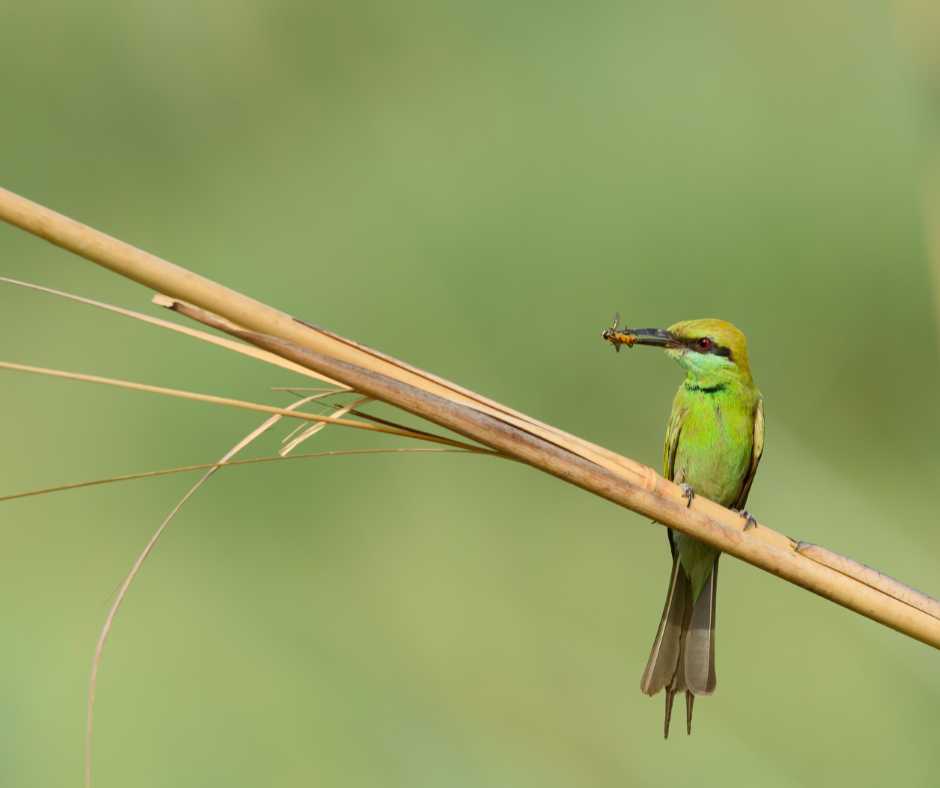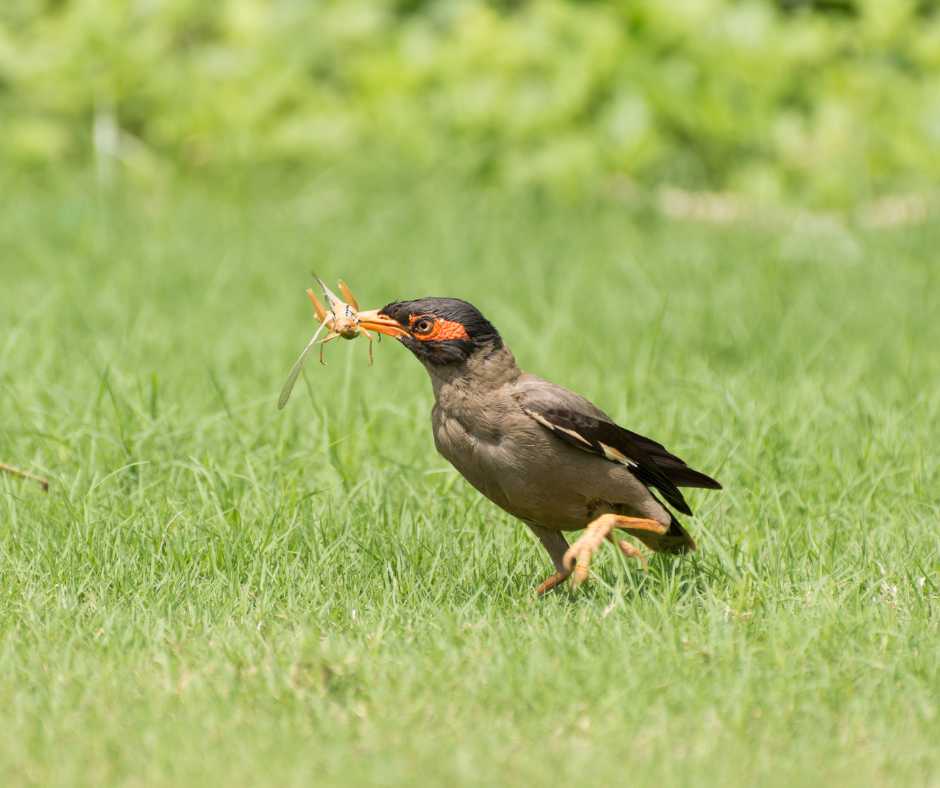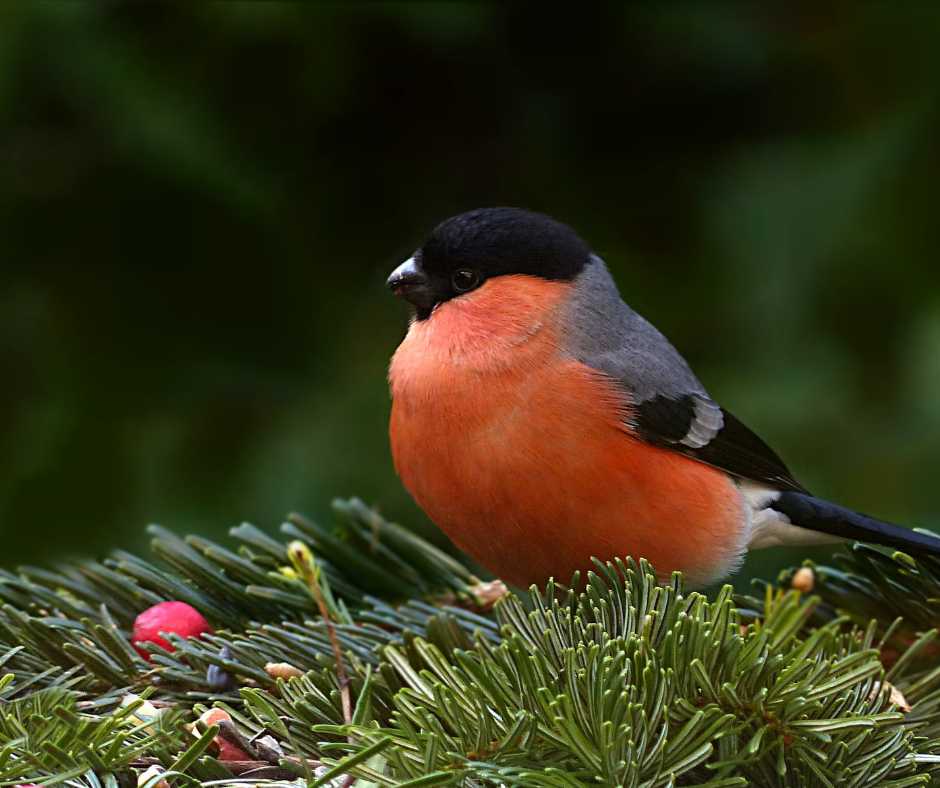Did you know that birds are secret gardeners? Many wonder, ‘Do birds help plants grow?’ Absolutely!
Birds significantly benefit gardens by pollinating plants, dispersing seeds, and controlling pests, which helps plants grow and thrive. They maintain ecosystems by aiding in forest regeneration and pest balance, contributing to biodiversity and environmental health.
This blog post dives into how birds benefit plant growth and outlines simple strategies to make your garden a haven for birds, boosting your garden’s health and biodiversity. Get ready to transform your green space into a thriving ecosystem.
The Symbiotic Relationship Between Birds and Plants
Birds in your garden are not just visitors; they’re vital players in your garden’s ecosystem. Beyond their beauty and songs, they work hard at helping your plants grow. Ready to explore how this teamwork benefits your green space?
How Birds Boost Plant Growth
Imagine your garden is a big party, and birds are the guests bringing gifts – only their gifts are the services of pollination, seed dispersal, and pest control. Pretty neat, right?
Birds are nature’s very own pollinators. While they’re sipping on that sweet, sweet nectar, they’re also busy bees (or should we say busy birds?) moving pollen from one flower to another. It is a big deal because it helps plants make seeds and fruits, adding colors and flavors to our gardens.
But wait, there’s more! When birds munch on fruits, they’re not enjoying a meal but unknowingly signing up for a delivery service. They carry seeds away and drop them off in new locations, giving birth to new plant life everywhere. It’s like they’re flying gardeners, planting the future of forests and fields without knowing it.
And let’s not forget the superhero side of these feathery friends – pest control! Birds have quite the appetite for insects that would otherwise chow down on our plants. Birds keep our gardens thriving and save us from reaching for the chemical sprays by gobbling up these pesky pests.
So, when you spot a bird in your backyard, remember they’re on a mission to protect and serve your greenery.

The Mutual Benefits: From Shelter to Food
This relationship isn’t one-sided; it’s a full-blown partnership. Plants roll out the red carpet for birds by offering them a feast of nectar, seeds, and fruits. In return, birds provide the essential services we talked about. It’s a win-win. Plants get to grow and reproduce, and birds always have food and places to call home.
Think of it like this: your garden is a bustling city, and plants and birds are the residents working together to keep the city alive and kicking. Plants like grocery stores, restaurants, and homes provide everything birds need to thrive. In return, birds help keep the city clean and safe by caring for pests and helping new plants grow.
So, the next time you’re out in your garden and hear the chirp of a bird or see them flitting from plant to plant, give them a little nod of thanks. They’re the unsung heroes keeping your garden vibrant and healthy, all while keeping the circle of life spinning.
How Birds Elevate Your Garden
Birds are the unsung heroes of your garden, actively keeping it healthy and vibrant by controlling pests and managing weeds. Let’s dive into how these winged wonders contribute to your garden’s well-being.
Natural Pest Controllers
Imagine a world where your plants are always healthy, without chemical pesticides. Sounds pretty great, right? It can be your garden’s reality thanks to birds like sparrows, bluebirds, and chickadees. These birds are nature’s pest control, munching on aphids, caterpillars, and other harmful insects that threaten your plants.
Take the common sparrow, for instance. It’s not hopping around for fun; it’s on a mission to find bugs. And bluebirds? They’re like your garden’s guardians, patrolling for pesky invaders. By welcoming these birds into your space, you’re signing up for a natural pest management team that works around the clock to keep your garden thriving.

Birds’ Role in Weed Management
Now, onto weeds. We all know how annoying they can be, right? Enter finches, sparrows, and other seed-eating birds. These guys are like the cleanup crew, targeting the seeds of those unwanted weeds before they can sprout. Think of it as natural weed control.
By feeding on weed seeds, birds help reduce the spread of these garden invaders, making your job much easier.
It’s not just about eating seeds, though. The mere presence of birds can deter certain weeds from taking over. As birds dig around for food, they disturb the soil, making it harder for weeds to establish.
Plus, when birds carry seeds to different locations, they often deposit them in places where weeds are less likely to thrive, indirectly helping to manage weed populations.
You may also read: Do Birds Eat Garden Plants
Addressing the Concerns: Do Birds Damage Plants?
When it comes to our feathered friends visiting our gardens, a common worry pops up: “Do birds harm the plants they seem to help?” It’s a fair question, especially when you spot a half-eaten tomato or a pecked-at apple. Let’s clear the air on this.
Yes, birds might occasionally damage plants in their quest for food or during their daily activities. You might see signs like tiny holes in leaves or fruits that a curious beak has sampled. But before you consider this a deal-breaker, let’s put things into perspective.
The minor mischief birds might cause is far outweighed by the benefits they bring to the table (or, in this case, the garden). Birds are nature’s pest control, snacking on those insects that love nothing more than to chew through your plants. Plus, their role in pollination and seed dispersal is vital for a healthy, thriving garden ecosystem.
So, how do we keep the peace in our green spaces, enjoying all the good that birds do while minimizing the occasional nibble? It’s all about coexistence with a sprinkle of intelligent gardening.
Protecting young seedlings with netting or cages can shield them during their most vulnerable stages. For fruit trees and bushes, a well-placed net can keep the fruits intact until they’re ready to be picked.
It’s about finding that sweet spot where your garden remains a haven for birds while safeguarding the fruits of your labor.
Remember, a few pecked fruits or nibbled leaves are a small price to pay for the vibrant ecosystem and natural beauty birds bring to our gardens. So, let’s welcome these natural guardians with open arms (and maybe a bird feeder or two), knowing they’re key players in the garden’s circle of life.

Strategies to Attract Birds to Your Garden
Want to make your garden a bird paradise? It’s easier than you think! By adding native plants, water sources, shelters, and the right food, you can turn your backyard into a bustling hub for our feathered friends. Let’s dive into how you can make your garden the go-to spot for birds.
Selecting Native Plants for Your Feathered Friends
First up, plants! Choosing native plants is like setting up a welcome sign for birds. These plants are naturally designed to thrive in your area and provide the best snacks and shelters for local birds. From berry-producing shrubs to nectar-rich flowers, native plants offer the nutrients birds need to stay healthy. Plus, they’re used to the local climate, which means less hassle.
Water, Shelter, and Sanctuary: Building a Haven for Birds
Birds need more than food; they need water and a safe place to chill. Adding a birdbath or a small pond gives birds a place to drink and bathe and attracts them to your garden. And when it comes to shelter, think beyond birdhouses. Dense shrubs, tall trees, and even a pile of leaves can provide excellent nesting spots and protection from predators.
Read more: How to Make a Birdhouse
Feeding the Flock: Best Practices for Bird Feeders
Now, let’s talk about food. Bird feeders are a fantastic way to feed the birds, but it’s not a one-size-fits-all deal. Different birds like different snacks. Some are nuts for seeds, while others prefer fruits or suet. By offering a variety of foods, you’ll attract a diverse group of birds to your garden. And remember, keep those feeders clean to keep the birds healthy and returning for more.
By following these simple strategies, you’ll enjoy the beauty and songs of birds in your garden and play a crucial role in supporting their well-being. So, why start today and see who flies in for a visit?
Read more: How to Make a Bird Feeder
Beyond the Garden: The Larger Ecological Impact
Birds are like nature’s garden helpers and bug catchers. They spread plant seeds, helping forests and green areas grow, not in our yards but all over. This means we get stronger and healthier places to handle weather changes and balance the earth.
Birds also eat a lot of insects, which is excellent because it means we don’t have to use harmful bug sprays. By adding plants birds love, places for them to drink, and feeders in our gardens, we’re helping the earth in a big way. Our gardens do better, and we help keep our planet beautiful. It’s good for us and good for nature.

People Also Asked
What types of birds can help with pollination?
Hummingbirds, honeyeaters, and some species of finches and sparrows are excellent pollinators.
Can birds help with all types of pests?
While birds can help control many common garden pests, they may not target every type. It’s a balance!
What native plants are best for attracting birds?
It depends on your region, but plants that produce berries, seeds, and nectar are good choices. Check local resources for specifics.
Do I need a big garden to attract birds?
Not at all! Even small spaces can be made inviting with the right plants, feeders, and water sources.
How can I protect my fruits and seedlings from birds?
Using netting or cages can help protect vulnerable plants without harming the birds.
Wrap Up
So, we’ve seen how excellent birds are for our gardens. They’re not about the beautiful songs and the splashes of color they bring. Birds help our gardens to bloom and buzz by controlling pests, spreading seeds, and so much more.
By welcoming them into our gardens with native plants, cozy shelters, and a bit of food and water, we’re making our little green spaces thrive and doing our bit for the planet.
Why not try these tips and turn your garden into a bird paradise? Go on, share your bird-friendly garden stories, swap tips with fellow garden enthusiasts, and keep learning about these feathered friends. Let’s all chirp in and spread the word about how birds can improve our gardens and world.

